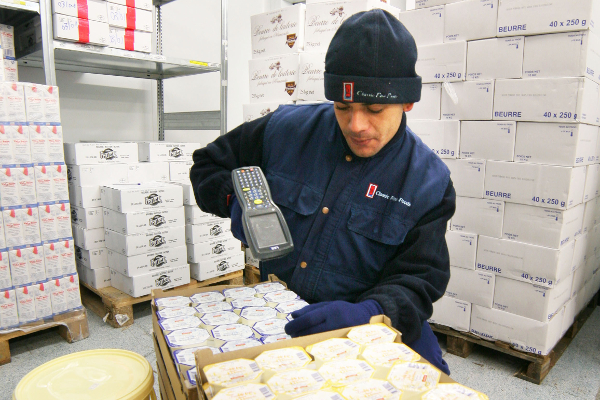If you’re in the food distribution industry you need to manage your stock efficiently and reduce operating expenses and costs, all whilst simultaneously ensuring you meet stringent regulations and maintain strict quality controls.
All of these needs can be met with an ERP system integrated to a warehouse management system. So, what are the vital ERP features for food distribution?
Product traceability
If there is an issue with the quality of a product, it is imperative that the distributor can track and trace batches and deliveries of product. In the event of a problem, however serious, a company needs to quickly and efficiently access the information to be track lots and to respond to the situation.
An ERP system can handle traceability by lot, batch or consignment numbers, allowing items to be tracked throughout the supply chain process, and detailing when and to whom the products in question have been sold.

Expiry date management
Food distributors need to be certain that they are supplying products that are fit to eat, so they need to be critically aware of use by, sell by and best before dates.
This data can easily be defined in an ERP system, as can product shelf life data, allowing perishable goods to reach retailers and end users in good time.
Inventory optimisation
In the competitive food industry, having the right products at the optimum stock levels is fundamental for business success. Distributors need to be able to meet demand, but not be holding too much stock so that it is tying up money and not being sold.
ERP systems can help by enabling companies to track stock levels and inventory movements in real-time, allowing them to identify out-of-stock situations, analyse purchasing and product trends, anticipate demand and reduce stock-holding costs.
Units of measure, catch weights and bar code handling
Dealing with multiple product lines can often mean countless product features need to be defined and recorded. ERP systems allow for multiple units of measure, such as weights, volumes, dimensions and “catch weights”. Products can be expressed in more than one unit of measure at once, allowing for accurate ordering, pricing, sale, and delivery of stock. A transaction can be made in the relevant unit of measure so that while a distributor may count its stock in pallets, it may sell them in units, allowing for parts of a pallet to be sold, for example.
Using bar code technology allied to an ERP system allows a distributor to automate its warehousing for faster and more accurate processing. Bar code handling eliminates manual data input and reduces the probability of user error. Bar code scanning brings improved accuracy and assures a company that customers will receive the right orders.
Single-source system
An ERP system provides complete visibility over the entire supply chain process and provides a single-source system that can be accessed by all departments in a company. It not only manages financial processing and accounts, but is central to purchasing, warehousing, operations, quality control, customer services, sales and marketing. With the advent of cloud and mobile solutions, business-critical data and functionality can also be accessed at any time and from anywhere.
A single-source system works on a single database of information. With all departments accessing the same information, this can improve inter-departmental co-operation and ultimately enhance business productivity.
Balloon One has extensive experience of working with food distribution businesses. If you would like to find out more about the ERP and warehouse management systems that have helped our food distribution customers, please call us for a free demonstration on 020 8819 9071 or contact us using the website form.
Save
Save
Save
Save
Save